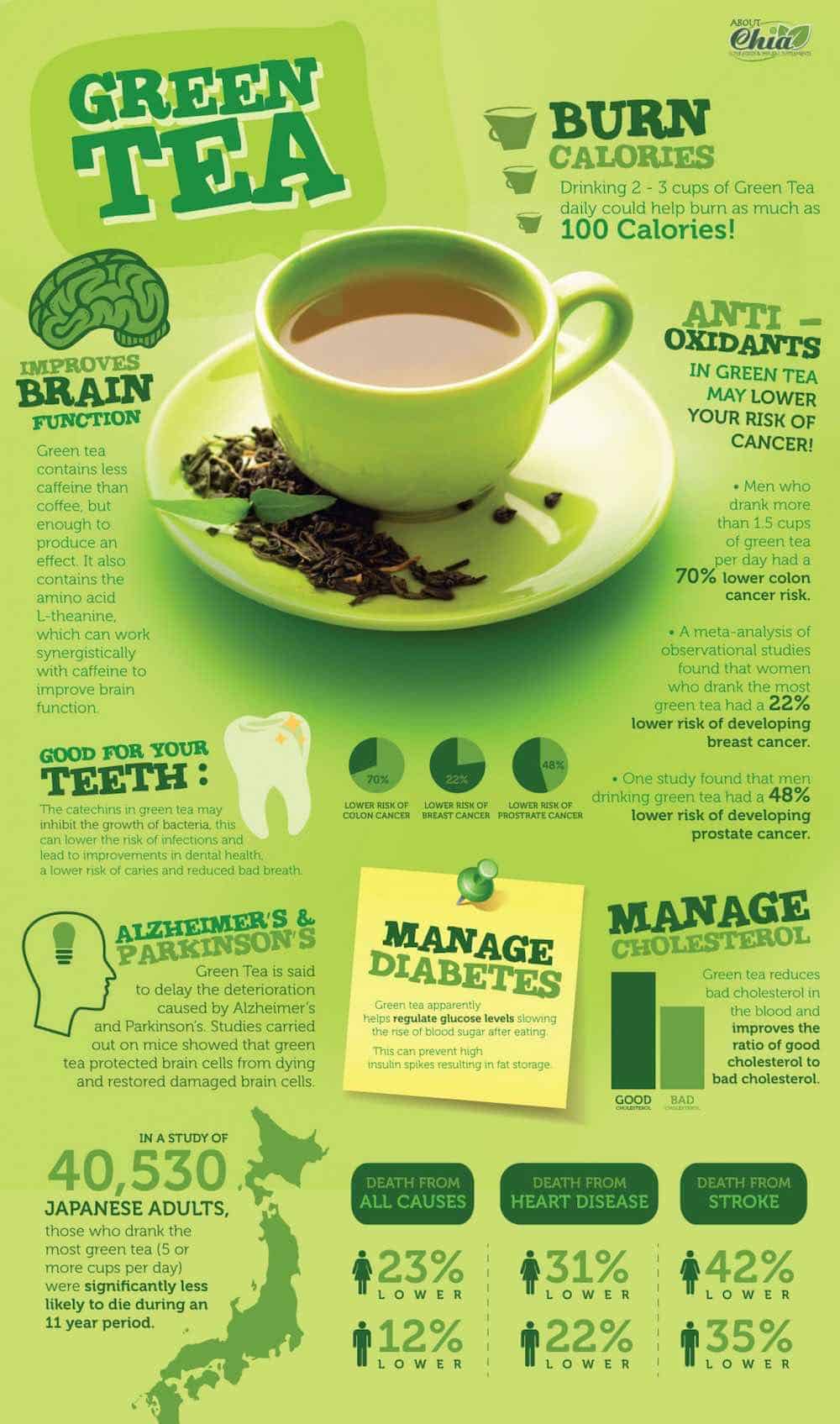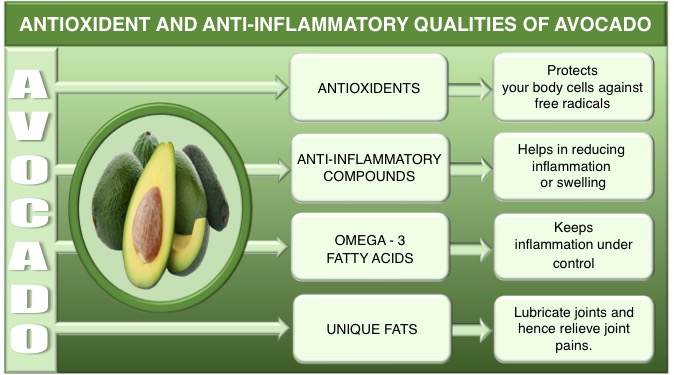The Emerald Elixir: Unraveling the Health Perks of Green Tea – Fact vs. Fiction
For millennia, nestled in the misty mountains and verdant valleys of Asia, a humble leaf has been cultivated, revered, and steeped into a beverage that transcended mere sustenance. Green tea, with its delicate aroma and vibrant hue, began its journey as a medicinal tonic, a spiritual aid, and a cornerstone of cultural rituals. Fast forward to the 21st century, and this ancient elixir has undergone a global renaissance, propelled into the spotlight as a modern-day "superfood." From the serene tea ceremonies of Japan to the bustling coffee shops of New York, green tea has carved out a formidable reputation, celebrated for an astonishing array of health benefits.
Yet, with popularity comes the inevitable tide of hype, exaggeration, and misinformation. In our quest for wellness, we often latch onto the promise of a simple solution, allowing marketing narratives to overshadow scientific nuance. The story of green tea’s health perks is, therefore, not just one of discovery, but also one of discernment – a journey to separate the scientifically substantiated truths from the captivating fictions. For the knowledgeable connoisseur of health, understanding this distinction is paramount to harnessing green tea’s true potential, appreciating its complexities, and integrating it wisely into a holistic lifestyle.
The Alchemy of the Leaf: Green Tea’s Potent Chemistry
To truly appreciate green tea’s impact, we must first delve into its unique biochemical composition, the very essence that gives it its power. Unlike black tea, which undergoes significant oxidation, green tea leaves are quickly steamed or pan-fired after harvest, halting the oxidation process and preserving a higher concentration of its most valuable compounds. This gentle processing is the secret to its distinctive chemical profile.
1. The Catechin Crusaders: Polyphenols to the Fore
At the heart of green tea’s therapeutic prowess are its polyphenols, particularly a class of flavonoids known as catechins. These are the undisputed champions of green tea, responsible for much of its antioxidant and anti-inflammatory activity. The predominant catechins in green tea include:
- Epigallocatechin gallate (EGCG): The superstar. EGCG is the most abundant and biologically active catechin, accounting for a significant portion of green tea’s antioxidant capacity. Its intricate molecular structure allows it to neutralize free radicals with remarkable efficiency, thereby mitigating oxidative stress – a key driver of aging and chronic diseases. EGCG’s multifaceted mechanisms include modulating enzyme activity, influencing gene expression, and interacting with cellular signaling pathways.
- Epigallocatechin (EGC), Epicatechin gallate (ECG), and Epicatechin (EC): While less potent than EGCG, these catechins work synergistically, contributing to the overall antioxidant shield provided by green tea.
These catechins act as powerful antioxidants, meaning they can scavenge harmful free radicals – unstable molecules that damage cells, proteins, and DNA, leading to inflammation and various diseases. Think of them as tiny cellular bodyguards, constantly patrolling and neutralizing threats before they can cause widespread damage. Beyond their direct antioxidant action, catechins also exhibit anti-inflammatory, antimicrobial, and even anti-carcinogenic properties through a variety of complex biochemical pathways.
2. The Calm Focus Duo: L-Theanine and Caffeine
Green tea offers a unique neurocognitive experience, largely thanks to the harmonious interplay between two other key compounds:
- L-Theanine: This rare amino acid, almost exclusively found in tea plants (Camellia sinensis), is the secret to green tea’s characteristic "calm alertness." L-Theanine crosses the blood-brain barrier and directly influences brain activity, particularly by increasing alpha brain wave activity. Alpha waves are associated with a state of relaxed wakefulness, improved focus, and mental clarity, without inducing drowsiness. It also plays a role in the production of neurotransmitters like GABA, dopamine, and serotonin, contributing to mood regulation and stress reduction.
- Caffeine: Yes, green tea contains caffeine, but typically in lower concentrations than coffee. The amount varies significantly depending on the tea type, brewing method, and leaf grade (Matcha, for instance, is quite high). The magic happens when caffeine is combined with L-Theanine. While caffeine alone can sometimes lead to jitters and anxiety, L-Theanine smooths out its effects, providing sustained energy and enhanced focus without the typical caffeine crash. It’s a sophisticated synergy that optimizes cognitive performance.
3. A Supporting Cast: Vitamins, Minerals, and Other Compounds
While catechins and the L-Theanine/caffeine duo steal the spotlight, green tea also contributes a modest array of other beneficial nutrients:
- Vitamins: Small amounts of Vitamin K (important for blood clotting and bone health), Vitamin C (an antioxidant), and B vitamins (essential for metabolism) are present.
- Minerals: Manganese (bone health, metabolism), potassium (blood pressure), fluoride (dental health), and trace amounts of selenium, chromium, and zinc.
- Chlorophyll: The pigment responsible for green tea’s vibrant color, which also has mild detoxifying properties.
- Flavonoids (other than catechins) and Phenolic Acids: These compounds further contribute to the tea’s antioxidant and anti-inflammatory profile.
This intricate tapestry of bioactive compounds forms the foundation upon which green tea’s health claims are built. Now, let’s explore which of these claims stand up to rigorous scientific scrutiny.
Fact: The Scientifically Validated Health Perks
The body of scientific literature supporting green tea’s health benefits is vast and ever-growing. While no single food or beverage is a magic bullet, regular consumption of green tea, as part of a balanced lifestyle, offers a remarkable range of well-substantiated advantages.
1. Cardiovascular Health: A Heart’s Best Friend
This is perhaps one of the most robust areas of green tea research. Numerous epidemiological studies, meta-analyses, and clinical trials consistently demonstrate green tea’s positive impact on heart health.
- Cholesterol Management: Green tea has been shown to modestly lower levels of LDL (bad) cholesterol and triglycerides, while some studies suggest it may slightly increase HDL (good) cholesterol. The catechins, particularly EGCG, are believed to inhibit cholesterol absorption in the gut and reduce its synthesis in the liver.
- Blood Pressure Regulation: Regular green tea consumption is associated with a slight reduction in both systolic and diastolic blood pressure. This effect is attributed to catechins improving endothelial function (the lining of blood vessels), enhancing nitric oxide production (which helps relax blood vessels), and reducing inflammation.
- Reduced Risk of Heart Disease and Stroke: Large-scale population studies, particularly from Asian countries where green tea consumption is high, show a significant inverse relationship between regular green tea intake and the incidence of cardiovascular disease and stroke. For instance, a Japanese study involving over 40,000 individuals found that those who drank five or more cups of green tea per day had a 26% lower risk of death from cardiovascular disease.
2. Brain Function and Cognitive Enhancement: Sharpening the Mind
The unique combination of L-Theanine and caffeine makes green tea an exceptional cognitive enhancer, offering a different kind of mental boost than coffee.
- Improved Alertness and Focus: The synergy between L-Theanine and caffeine provides a sustained, smooth increase in alertness, attention, and working memory. L-Theanine mitigates the jittery side effects of caffeine, allowing for a more focused and less anxious state.
- Mood Regulation and Stress Reduction: L-Theanine’s ability to increase alpha wave activity and influence neurotransmitters like GABA and serotonin contributes to a sense of relaxation, reduced anxiety, and improved mood without causing drowsiness. It’s often described as a "meditative state."
- Neuroprotection: Emerging research suggests that green tea catechins, particularly EGCG, may offer neuroprotective benefits. They combat oxidative stress and inflammation in the brain, which are implicated in neurodegenerative diseases like Alzheimer’s and Parkinson’s. While not a cure, long-term consumption may play a role in reducing risk or slowing progression by protecting neurons and improving brain plasticity.
3. Metabolic Health and Weight Management: A Supportive Ally
While not a magic bullet for weight loss, green tea offers genuine, albeit modest, support for metabolic health and fat burning.
- Enhanced Fat Oxidation: Green tea catechins, especially EGCG, can boost metabolism and increase fat oxidation (the process of burning fat for energy). They do this by inhibiting an enzyme that breaks down norepinephrine, a neurotransmitter that signals fat cells to break down fat.
- Improved Insulin Sensitivity: Studies indicate that green tea can improve insulin sensitivity and help regulate blood sugar levels, potentially reducing the risk of developing type 2 diabetes. Its anti-inflammatory properties may also play a role in protecting pancreatic beta cells.
- Modest Weight Loss Support: When combined with a healthy diet and exercise, green tea consumption has been shown in some studies to contribute to a small but significant increase in calorie expenditure and a reduction in body fat, particularly visceral fat. It’s an adjunct, not a standalone solution.
4. Cancer Prevention: A Complex, Promising Frontier
This is arguably the most extensively researched, yet most nuanced, area of green tea’s health claims. While the evidence is compelling, especially from laboratory and epidemiological studies, human intervention trials have yielded mixed results, highlighting the complexity of cancer and individual variability.
- Mechanisms of Action: EGCG and other catechins exhibit a range of anti-cancer properties in preclinical studies:
- Antioxidant and Anti-inflammatory: Reducing DNA damage and chronic inflammation, key drivers of cancer initiation and progression.
- Inducing Apoptosis: Promoting programmed cell death in cancer cells while sparing healthy cells.
- Inhibiting Angiogenesis: Preventing the formation of new blood vessels that feed tumors.
- Suppressing Cell Proliferation: Halting the uncontrolled growth of cancer cells.
- Modulating Gene Expression: Influencing genes involved in cell growth, differentiation, and metastasis.
- Epidemiological Evidence: Population studies consistently show a correlation between regular green tea consumption and a reduced risk of various cancers, including breast, prostate, colorectal, lung, and ovarian cancers. For example, women who drink green tea regularly show a lower risk of breast cancer recurrence.
- Clinical Trials: Human intervention studies are more challenging. While some show promise, particularly in preventing recurrence or progression of certain cancers (e.g., prostate cancer), others have not demonstrated a significant effect. The dose of catechins required might be higher than typically consumed, and genetic variations or lifestyle factors can influence outcomes. It is crucial to emphasize that green tea is a preventative measure and a potential adjuvant, not a cure or primary treatment for established cancer.
5. Oral Health: A Fresh Approach to Dental Hygiene
Green tea’s antibacterial and anti-inflammatory properties extend to the oral cavity, offering tangible benefits for dental health.
- Cavity Prevention: Catechins can inhibit the growth of Streptococcus mutans, the primary bacterium responsible for plaque formation and tooth decay. They also interfere with the bacteria’s ability to stick to tooth enamel.
- Reduced Bad Breath: Green tea polyphenols can neutralize sulfur compounds, which are a major cause of halitosis (bad breath), making it a natural breath freshener.
- Gum Health: Its anti-inflammatory properties can help reduce gum inflammation and bleeding, contributing to healthier gums and potentially reducing the risk of periodontal disease.
6. Skin Health: Radiance from Within (and Without)
Green tea’s potent antioxidant and anti-inflammatory compounds can benefit the skin, both when consumed and when applied topically.
- UV Protection: Catechins, particularly EGCG, can offer some protection against UV-induced skin damage, reducing inflammation and oxidative stress caused by sun exposure. While not a substitute for sunscreen, it offers an internal defense.
- Anti-aging Effects: By combating free radical damage, green tea helps preserve collagen and elastin, contributing to skin elasticity and reducing the appearance of wrinkles.
- Anti-inflammatory for Skin Conditions: Topical application of green tea extracts can soothe inflammatory skin conditions like acne, rosacea, and psoriasis due to its calming properties.
7. Bone Health: A Supporting Role
Though less widely publicized, emerging research suggests green tea may play a role in maintaining bone mineral density and reducing the risk of osteoporosis, especially in older women. The catechins may promote bone formation and inhibit bone breakdown, while also reducing oxidative stress that can damage bone cells.
8. Immune System Support: A Boost for Body’s Defenses
Green tea has been shown to modulate the immune system, enhancing its ability to fight off infections. Its catechins possess antiviral and antibacterial properties, and they can influence the activity of immune cells, potentially strengthening the body’s overall defense mechanisms against common colds, flu, and other pathogens.
Fiction, Exaggeration, and Misconceptions: Debunking the Myths
The enthusiasm surrounding green tea’s benefits has, unfortunately, led to a fertile ground for myths and overstatements. For the knowledgeable consumer, it’s essential to critically evaluate these claims.
1. "Green Tea Cures Cancer": A Dangerous Oversimplification
This is perhaps the most pervasive and dangerous myth. While green tea shows significant promise in cancer prevention and as a potential adjuvant in therapy, it is absolutely not a cure for cancer.
- The Nuance: Laboratory studies often use highly concentrated extracts of EGCG on isolated cancer cells or in animal models, at doses far exceeding what can be achieved by drinking brewed tea. Human clinical trials for established cancers have yielded mixed and often inconclusive results.
- Prevention vs. Treatment: Green tea’s role is primarily in preventing cancer initiation and progression, not in eradicating existing tumors. Relying on green tea as a primary cancer treatment instead of conventional medical therapies can have dire consequences.
- Interactions: High-dose green tea extracts can interact with certain chemotherapy drugs, sometimes in detrimental ways, highlighting the need for caution and medical consultation.
2. "Green Tea is a Miracle Weight Loss Pill": The Wishful Thinking Fallacy
Many marketing campaigns tout green tea as a rapid fat burner. While it does contribute to metabolic health, the idea that it’s a standalone solution for significant weight loss is misleading.
- Modest Effects: The increase in metabolism and fat oxidation from green tea consumption is generally modest. Clinical studies show that while it can contribute to a small increase in calorie expenditure (around 3-4%) and some reduction in body fat over time, these effects are not dramatic.
- Lifestyle is Key: Green tea supports weight management when integrated into a comprehensive strategy that includes a calorie-controlled diet and regular physical activity. Expecting it to melt away pounds without other lifestyle changes is unrealistic.
- Variability: Individual responses to green tea for weight loss vary significantly based on genetics, existing metabolic rate, and other factors.
3. "All Green Teas Are Created Equal": The Illusion of Uniformity
The term "green tea" encompasses a vast spectrum of varieties, each with unique characteristics and chemical profiles.
- Processing Matters: Japanese green teas (Sencha, Gyokuro, Matcha) are typically steamed, preserving chlorophyll and a fresh, grassy flavor. Chinese green teas (Longjing, Bi Luo Chun) are often pan-fired, resulting in a toastier, nuttier profile. These processing differences impact the final catechin content and other bioactive compounds.
- Cultivar and Growing Conditions: The specific tea plant cultivar, soil quality, climate, and shade-growing practices (e.g., Gyokuro, Matcha) all influence the concentration of catechins, L-Theanine, and other compounds. Shade-grown teas, for instance, tend to have higher L-Theanine content.
- Brewing Method: The temperature of the water, steep time, and ratio of tea to water significantly affect the extraction of beneficial compounds. Over-steeping with boiling water can extract more bitter tannins and degrade some catechins.
4. "Green Tea Has No Side Effects": The Overlooked Caveats
While generally safe for most people, green tea is not entirely without potential side effects, especially in high doses or specific circumstances.
- Caffeine Sensitivity: Individuals sensitive to caffeine may experience insomnia, jitters, anxiety, or digestive upset (nausea, stomach ache) if they consume too much green tea, particularly on an empty stomach.
- Iron Absorption Inhibition: The tannins in green tea can bind to non-heme iron (iron from plant sources), inhibiting its absorption. This is generally not an issue for individuals with adequate iron intake, but those prone to iron deficiency anemia should consume green tea between meals rather than with them.
- Liver Toxicity (Rare): Extremely high doses of green tea extracts (not brewed tea) have been linked to rare cases of liver toxicity. This is due to the highly concentrated nature of the extracts, which can overwhelm the liver’s detoxification pathways. Brewed green tea, consumed in moderation, is extremely unlikely to cause this.
- Medication Interactions: Green tea can interact with certain medications, including blood thinners (due to Vitamin K content), some chemotherapy drugs, and drugs metabolized by liver enzymes. Always consult a healthcare professional if you are on medication and plan to consume large amounts of green tea or supplements.
5. "Hot Green Tea is Always Better": A Matter of Preference and Extraction
While traditionally brewed hot, cold brewing green tea also has its merits and results in a different, but still beneficial, beverage.
- Extraction Differences: Hot water extracts catechins and caffeine more rapidly and thoroughly. However, it can also extract more tannins, leading to bitterness if over-steeped. Cold brewing extracts compounds more slowly, resulting in a smoother, less bitter taste, and potentially a different profile of extracted antioxidants.
- Sensory Experience: The "best" temperature is often a matter of personal preference and the specific tea type.
6. "More is Always Better": The Diminishing Returns Principle
The belief that consuming increasingly large amounts of green tea will exponentially increase its benefits is flawed.
- Optimal Dosage: Most studies suggesting health benefits refer to moderate consumption, typically 2-5 cups per day. Beyond this, the additional benefits tend to plateau, and the risk of side effects (primarily from caffeine or potential iron absorption issues) may increase.
- Concentrated Extracts: This principle is particularly important with green tea extracts. While they offer a higher concentration of catechins, they also carry a higher risk of adverse effects if misused. Brewed tea is generally safer and more balanced.
Optimizing Your Green Tea Experience: Practical Wisdom
Having navigated the landscape of fact and fiction, how can the knowledgeable individual best integrate green tea into their life to maximize its benefits?
- Choose Quality: Opt for high-quality, loose-leaf green tea from reputable sources. Whole leaves retain more of their beneficial compounds than tea dust in bags. Consider organic varieties to minimize pesticide exposure. Explore different types – Sencha, Gyokuro, Matcha, Bancha, Dragon Well – to discover your preferences and varied nutrient profiles. Matcha, for instance, provides a more concentrated dose of catechins and L-Theanine because you consume the entire powdered leaf.
- Brew Properly:
- Water Temperature: Avoid boiling water (212°F/100°C) as it can scorch the leaves and extract excessive bitterness. Aim for 160-180°F (70-80°C) for most green teas.
- Steep Time: 1-3 minutes is usually sufficient. Longer steep times increase bitterness and can degrade some delicate compounds.
- Water Quality: Use filtered water for the best taste and chemical extraction.
- Timing is Key:
- Between Meals: To avoid inhibiting iron absorption, drink green tea at least an hour before or after meals, especially if you are prone to iron deficiency.
- Morning/Afternoon: Enjoy it in the morning or early afternoon to benefit from the caffeine and L-Theanine for focus, but avoid consumption too close to bedtime if you are sensitive to caffeine.
- Moderate Consumption: Aim for 2-4 cups of brewed green tea per day. This amount is generally well-tolerated and associated with most of the observed health benefits in research.
- Listen to Your Body: Pay attention to how green tea affects you. If you experience digestive upset or caffeine sensitivity, adjust your intake or choose decaffeinated versions (though these may have slightly reduced catechin content).
- Brewed Tea Over Supplements: For most people, consuming brewed green tea is preferable to taking high-dose green tea extracts. Brewed tea offers a balanced array of compounds and a lower risk of adverse effects. If considering supplements, always consult a healthcare professional, especially if you have underlying health conditions or are on medication.
- Integrate Holistically: Green tea is a powerful ally, but it is not a standalone solution. Its benefits are best realized as part of an overall healthy lifestyle that includes a balanced diet rich in whole foods, regular physical activity, adequate sleep, and stress management.
The Emerald Legacy: A Concluding Reflection
The story of green tea is a testament to the enduring power of nature’s pharmacy. From its ancient roots as a revered tonic to its modern-day status as a global health phenomenon, green tea has proven itself to be far more than just a refreshing beverage. Its intricate symphony of catechins, L-Theanine, and other compounds offers a wealth of scientifically validated benefits, from bolstering cardiovascular health and sharpening cognitive function to supporting metabolic balance and offering a shield against cellular damage.
However, the knowledgeable consumer understands that true wisdom lies in discernment. The narrative of green tea, like any health story, is punctuated by both profound truths and seductive fictions. To appreciate its full potential, we must embrace the science, temper the hype, and recognize its role as a powerful, yet complementary, component of a healthy lifestyle. Green tea is not a panacea, nor a magic cure, but a delightful and beneficial elixir – a subtle, emerald whisper of wellness that invites us to slow down, savor, and nourish our bodies and minds, one thoughtful sip at a time.







